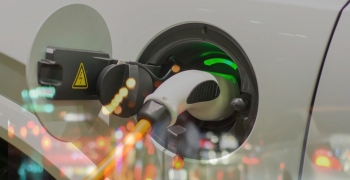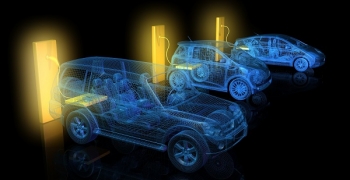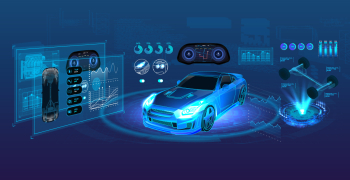Before the Spark was ignited
Electric Vehicles (EV) have, in the recent times, captured the imagination of the transportation industry and the public at large for a number of reasons, environmental pollution (leading to stricter emission norms) and depleting reserves of oil worldwide being the major ones.
The market sentiments are substantiated by a recent report by Center of Automotive Management (CAM) which determines that Plug-in Electric Vehicles presently have a global market share of 4.6%, almost double from what it was in 2017. According to another report on the future of electric vehicles by J.P. Morgan, the growth in EVs and hybrid electric vehicles (HEVs) - cars that combine a fuel engine with electric elements - is steadily going up and by 2025, EVs and HEVs will account for an estimated 30% of all vehicle sales worldwide.
Redundant Evolution of the EVs can be traced in three major phases – Early Introduction, Revival and making them sustainable for present and The Future. To begin with, let’s explore how the technology for electric vehicles was introduced early on, the challenges it faced and why it could not meet the promise it made.
The Genesis of Electric Vehicles – Over a Century Old!
Contrary to the popular notion that the EV is a comparatively recent phenomenon in the evolution of motorcars, it has actually been around for more than a century. To understand the evolution of the EV, it would help to put it into context with the way modes of personal transport developed.
The Industrial Revolution (1760 – 1840) had brought higher levels of prosperity and put more money into people’s hands, allowing them to experiment with different forms of transport. Steam, Petrol and Electric versions were all available at this point and each was battling for dominance in the market. Steam technology was already proven at the time and had successfully powered factories, trains and ships – so it was only natural that it would be experimented with for the building of the first motorcar. It did have limitations, though - steam engines needed a long startup time – often running up to an hour, making them impractical to use. They also had a limited range and needed to be constantly supplied with water.
Internal combustion engines that ran on petrol made huge strides through the 1800s. The first widely accepted internal combustion engine (powered using gasoline) was developed by Austrian inventor Siegfried Marcus in 1870. However, despite their power and utility, internal combustion engines weren't without their share of problems. They were not easy to drive, needing significant effort to start the engine in the first place as well as changing gears. These vehicles were also quite noisy and their exhaust fumes were smelly and unpleasant, which were distinct disadvantages.
The third option to be tried out and developed through the later part of the 1800s and the early part of the 1900s was the electric vehicleThey were free from many of the downsides that steam and internal combustion technology had – they were quieter, relatively easy to operate and had no emissions of any kind. This made them an attractive and ideal alternative to steam and combustion-based vehicles.
The “Golden Age” (1890 – 1920)
As the technology for electric vehicles flourished with a series of breakthroughs in the field made over the years, the last years of the 19th and early part of the 20th century could be recognized as their “golden age”. The market for these vehicles became quite lucrative, with electric battery-powered taxis becoming available around the time – notably, fleets of electric taxis were operational both in London and New York.
During the first decade of the 20th century, about a third of all vehicles on U.S. roads were electric and were powered via a network of charging stations, thanks to the increasingly easier access to electricity.Electric cars gained rapid popularity with the urban population – especially women, during these years. Automakers sensed an opportunity here and marketed the cars to women, fitting them with smart upholstery and knick knacks like flower vases, clocks and even makeup kits, in many instances. They were perfect for short trips around the city, but poor road conditions outside cities meant few cars of any type could venture farther.
Established innovators of the time sensed the market potential of the EV, seeing its high demand, and explored ways to improve the technology further. Ferdinand Porsche, founder of the eponymous sports car company, developed an electric car called the P1 in 1898. He also created the world’s first hybrid electric car – one that was powered by electricity and gasoline. Thomas Edison worked on creating a better version of the electric vehicle battery, as he believed this was the superior technology compared to all the others. His friend Henry Ford collaborated with him in 1914 to explore options of building a “cheap and practicable” automobile that would “run a 100 miles”. The project was, however, abandoned later.
The Decline (1920 – 1999))
Ironically, it was Ford’s mass-produced car Model T and a host of other gasoline-powered vehicles that caused the gradual decline of the electric vehicle, in this first phase of its existence. Model T was available to the customers at nearly one-third the price of electric vehicles being manufactured at that time. Additionally, the lack of adequate electrical infrastructure had also slowed down their pace of adoption among consumers, despite their popularity. With the advent of self-starting combustion automobiles that made bulky and cumbersome hand cranks irrelevant, it became easier to use gasoline-based cars. The discovery of huge deposits of petroleum worldwide further caused their adoption to accelerate both among the auto industry and the public. By the 1930s, most auto-makers had stopped producing EVs.
The Revival and the Road Ahead (2000 onwards)
Environmental concerns over carbon emission, the rising price of crude oil, fears of a worldwide shortage of the same and the search for alternative, cleaner fuels eventually led to the revival of the interest in electric vehicles in the 21st century. Many automakers also became cognizant of these global developments and started dedicating their R&D resources towards reviving mobility via electricity. Although, the early prototypes suffered from multiple drawbacks as compared to their gasoline-powered counterparts, the resurgence of EV had begun.
It wasn’t however till one blue-eyed brash innovator decided to challenge the norm that the idea really caught the attention of the world.
The journey was anything but straightforward, having to grapple with not only the technological challenges but also to create a space for himself in a very biased system.
Watch this space to learn how the story unfolds.




